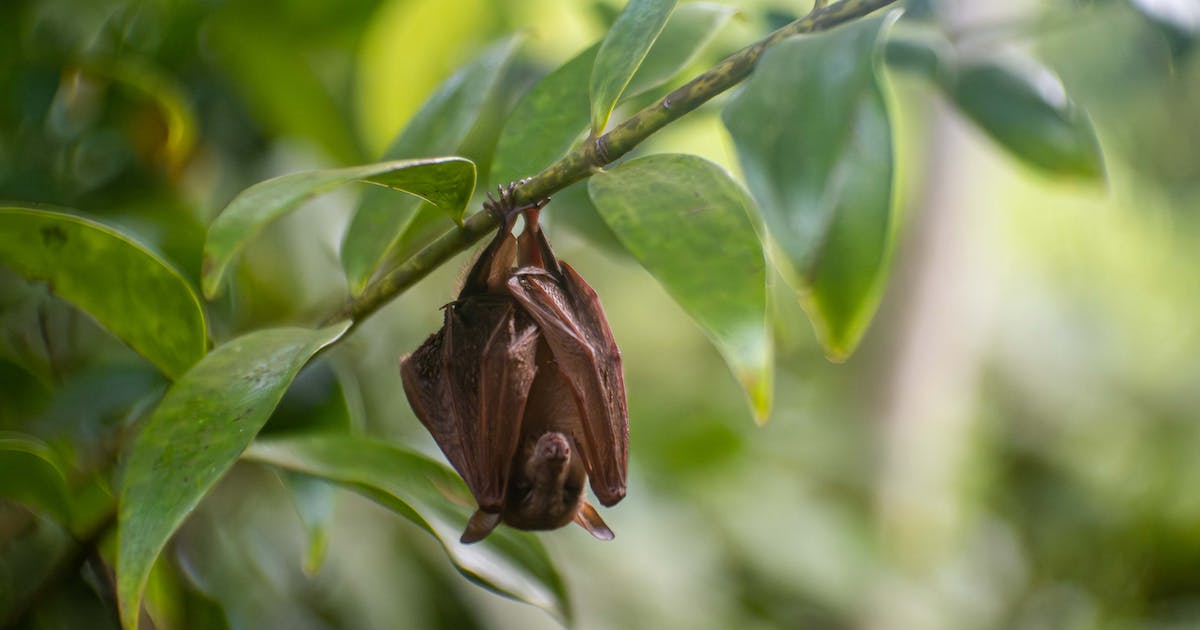Pacific sheath-tailed bats are vanishing across Oceania.
Weighing about as much as a quarter, these unique microbats were once found roosting in the overhanging cliffs, lava tubes and limestone caves of Guam, Tonga, Samoa, American Samoa and Vanuatu. But they gradually disappeared from one island after another — even dwindling to mere hundreds in their last stronghold in Fiji.
By any count, the species, scientifically known as Emballonura semicaudata semicaudata, was hurtling toward extinction.
But recently, that all changed. On one of Fiji’s least visited islands, an expedition led by Conservation International made a remarkable discovery: A cave containing thousands of Pacific sheath-tailed bats.
Inside the roosting cave on Vanua Balavu Island. © Boardman
Kristofer Helgen, the chief scientist of the Australian Museum Research Institute, and a team of researchers from Conservation International and the University of Adelaide discovered the bats during an expedition aimed at documenting the biodiversity of the Lau archipelago. This remote cluster of nearly sixty South Pacific islands is renowned for its deep caves and towering limestone cliffs — geological features the team hoped might harbor a population of bats.
“We descended into a cave on the island of Vanua Balavu not knowing exactly what we might find,” Helgen said.
The entrance was small and concealed by vegetation, requiring the researchers to crawl in, descend down a waterfall, swim through a pool and navigate a series of ever-shrinking chambers. But once inside, tell-tale signs made it clear they were on the right track. The path was caked with bat droppings, known as guano, and the air was periodically lit with the rustle of beating wings above them. Finally, at the end of a lengthy tunnel, they emerged into a massive underground cavern.
“The air was thick with bats as we entered this cathedral-like chamber,” Helgen said. “Every direction I turned I could see them moving through my torchlight.”
Helgen conservatively estimates that the population in the cave hovers at approximately 2,000 to 3,000 bats — making it the largest bat roost for any species across the entire South Pacific.
“We also found the bats in a number of other caves,” Helgen said. “This is a really hopeful sign that the Lau islands are still a stronghold for the species. We have the local communities to thank for that.”
Bats have been an integral part of the cultural and culinary heritage of the South Pacific for generations. In various regions, people collect bat guano as a nutrient-rich crop fertilizer and hunt bats as a source of sustenance. Nevertheless, these practices can have detrimental consequences for bats and their cave habitats, and Helgen suspects these activities may have contributed to the disappearance of Pacific sheath-tailed bats from entire island archipelagos.
“We don’t see anything like that happening in this cave,” he said. “The local communities have quite clearly made a deliberate choice to not exploit nor disrupt the cave, ensuring the bats can thrive undisturbed.”
 Pacific Sheath-tailed bat. © Helgen
Pacific Sheath-tailed bat. © Helgen
Mere Lakeba, a scientist at Conservation International, underscored that these types of discoveries are essential to furthering conservation efforts for endangered species.
“There’s a tremendous opportunity to work with the local communities to learn about their relationship with the bats,” Lakeba said. “They have a profound understanding of the land, shaped by generations of traditional practices and wisdom. We have a lot to learn from them about this roost and they will be instrumental in leading efforts to help protect the space.”
This is particularly crucial for creatures like bats, which linger near the brink of extinction in numerous regions. The International Union for the Conservation of Nature classifies over 200 bat species in 60 countries worldwide as threatened.
Bats remain the second most widespread and largest group of mammals, occupying nearly every nook and cranny of the globe. The Chiroptera order, often referred to as “hand-wing” creatures, includes a staggering 1,232 species, which accounts for 20 percent of all recognized mammal species. In other words, one out of every five mammal species is a bat.
Some of these species eat fruit, others are voracious insectivores, and a few are the much-mythologized, blood-drinking vampire bats. But in nearly every ecosystem on Earth, they are critical to their habitat, helping to pollinate plants, distribute seeds and control insect populations that can spread disease.
“Bats not only play a vital role in their habitat by controlling insect populations. They also offer a huge benefit to agriculture and human health,” Helgen said. “If we can bring the Pacific sheath-tailed bats back to more places, it will be good for both nature and people.”
Will McCarry is a staff writer at Conservation International. Want to read more stories like this? Sign up for email updates. Also, please consider supporting our critical work.



 Pacific Sheath-tailed bat. © Helgen
Pacific Sheath-tailed bat. © Helgen